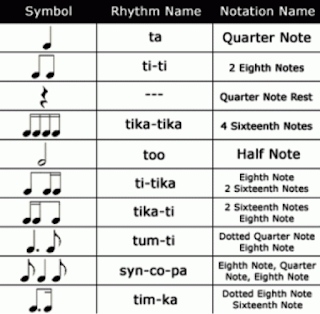Breathing Styles and Appoggio Breathing
I KNOW I’ve already talked a LOT about
breathing but guess what, you can never know too much about it! My Daddy was one of those guys that had his
tools mounted up on peg board in his “shop” with each one outlined in black,
sort of a “Color by Numbers” type of scenario.
He did not have A hammer. Oh,
no! He had, probably a DOZEN hammers in
different sizes, for various specialized purposes. Well, all these breathing posts are kinda
like those hammers. One “size” does NOT
fit all. One breathing exercise is not
enough to stimulate all your breathing needs; one explanation won’t give you
every detail you need. THEREFORE, I’m
going to continue to add breathing posts with more and more information, and
more and more exercises, so you will have more and more and better and more
specialized tools for aiding your singing.
Today’s topic is Breathing Styles. No, there is NOT a different kind of
breathing for rock music versus country or pop or even classical BUT in our
everyday lives, there ARE different types of breathing “styles” that will
AGAIN, help you get better and better at perfecting your singing, whatever
style that may be. I don’t believe I
have EVER had a student who didn’t come up against issues in one of their
songs, and it ALWAYS stems from BREATHING ISSUES. If you learn to breathe correctly for singing
NOW, no matter what the song, aria, scene, whatever, you will succeed with
unprecedented speed and ease. This is
NOT something I THINK is true; I have LIVED this, LEARNED these techniques, and
EXPERIENCED the incredible freedom, power, and flexibility that results. Below are the 4 types of Breathing. Check out the following few blog posts for
more detailed descriptions and exercises.
These changes are NOT quick! You
will have to work on these CONSISTENTLY, FREQUENTLY, UNTIL YOU’VE PRACTICED SO
LONG YOU’RE NOT PRACTICING ANYMORE! What
this means is that to BEGIN with, you will have to discipline yourself to
practice the breathing techniques and exercises. You HAVE to practice them a LOT and all the
time, and over and over. The amount of
time will vary from person to person but at some point, you will come to
realize that you don’t need to practice anymore because you are “connecting”
and “controlling” your breathing all the time already.
Breathing
Styles:
•
Scapular or Clavicular Breathing - Though some researchers
call this the “breath of exhaustion,” from watching distance runners upon
finishing a race with hands on their hips, “catching” their breath, I believe
Clavicular Breathing to be a much more shallow form of breathing, for the most
part. When you see a person’s shoulders
lifting when they breathe, this is Clavicular Breathing. Interestingly enough, when a physician
notices a patient breathing in this way, bronchial problems, such as bronchitis
or upper respiratory infection are suspected.
•
Abdominal Breathing - Known as the “breath of life,” this style of breathings deeply,
primarily involves the use of abdominal muscles for inhalation and exhalation. Animals use this form of breathing as do
newborn babies. Abdominal Breathing,
ONLY, unfortunately, causes something called “sub glottal pressure” or “the
fist in the throat” for singers. Muscles
in the body contract; that’s it, one function.
They rely on other muscles to counterbalance their movements. The Diaphragm contracts down when inhalation
takes place. If a “forceful” exhalation
occurs, as the Diaphragm begins to relax and move back to its original
position, muscles in the abdomen tighten and press the Diaphragm back into place. For a singer, this causes a sensation of
pressure or discomfort in the throat, which is the “fist in the throat” and
“sub-glottal pressure”. This pressure
can have long-term, negative consequences as well, including causing an
uncontrollable “shake” or wobble in the voice.
•
Intercostal Breathing - The Internal and External Intercostal muscles are tiny,
little muscles between the ribs. We
always think of the ribs as solid and immovable but each and every time you
breathe, they move, sometimes up and out, sometimes in and down. The rib cage becomes very “elastic” during
respiration. This is “chest breathing”
and does not really engage abdominal muscles.
•
Thoracic or Pancostal Breathing - This is a “combination”
breathing style. By combining abdominal
and intercostal breathing styles, Diaphragmatic-Intercostal or Thoracic Breathing
results. The abdominal breath is used
for creating a “reserve” or reservoir of air, while intercostal exhalation
control allows for strong phrasing and expression. The greatest challenge with this breathing
style is learning to “control” or balance the shape of the chest, while
resisting the impulse to expel air with immediacy. Learning to tighten abdominal muscles,
forcing air to fill the chest instead, or learning to resist the outflow of air
from the chest, all contribute to successful pancostal breathing. This is known as “Appoggio” or
“supported” singing. The two most
crucial components of Appoggio are learning to preserve the “balance of
forces” in the body during exhalation, and that the External Intercostals will
be terribly fatigued if the abdominal muscles, especially the Rectus Abdominus
(what most people commonly know as “Abs”), are over-inflated during
inhalation. The key word here is
“balance” and it is this balance that requires hours and hours of practice to
achieve.
Check
out the next post for additional exercises to begin building your connection to
and strengths in each of the types of breathing addressed above. Thank you so much for reading! Please send me any and all additional
questions you have about these topics.
For questions about my lessons or me personally, consult my website at www.SingitForward.net. I greatly love receiving your feedback,
questions, comments, and ideas for future blog posts, so please don’t be shy
about sending them. Sing it Forward!


Comments
Post a Comment